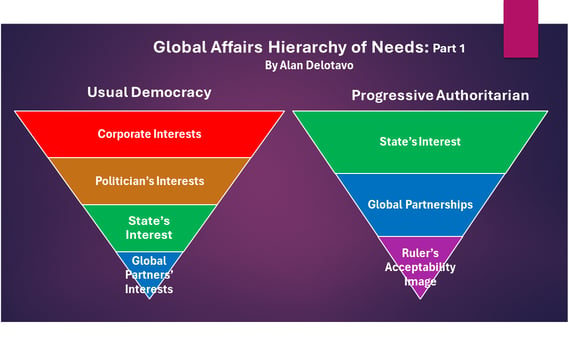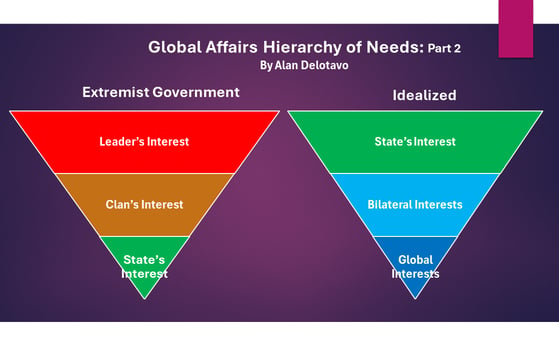Global Affairs Hierarchy of Needs
All societies, refocus or impose their demands in accordance with the nature of their political leadership.
1/1/20251 min read
Like Maslow’s Hierarchy of Needs, the Global Affairs Hierarchy of Needs is a framework that draws parallels to Maslow's Hierarchy of Needs but applies it to the realm of international relations and global affairs. It suggests that nations prioritize their actions and policies based on five levels of needs:
Security: This includes physical safety, defense, and protection of sovereignty.
Economic Stability: Ensuring access to resources, trade opportunities, and economic development.
Political Stability: Establishing effective governance, rule of law, and stability within and among nations.
Human Rights and Dignity: Promoting social justice, equality, and respect for human rights.
Environmental Sustainability: Addressing environmental challenges and ensuring the long-term viability of the planet.
According to the model, countries should rank these needs in order of significance, with higher-level demands gaining importance after lower-level needs are sufficiently satisfied.
All societies, however, refocus or impose their demands in accordance with the nature of their political leadership; thus, emerges the Polity Paradigm of Global Affairs Hierarchy of Needs.
Importance:
The paradigm establishes the groundwork for categorizing governments.
It provides the framework for shaping the directions and policies of both national and international relations.




